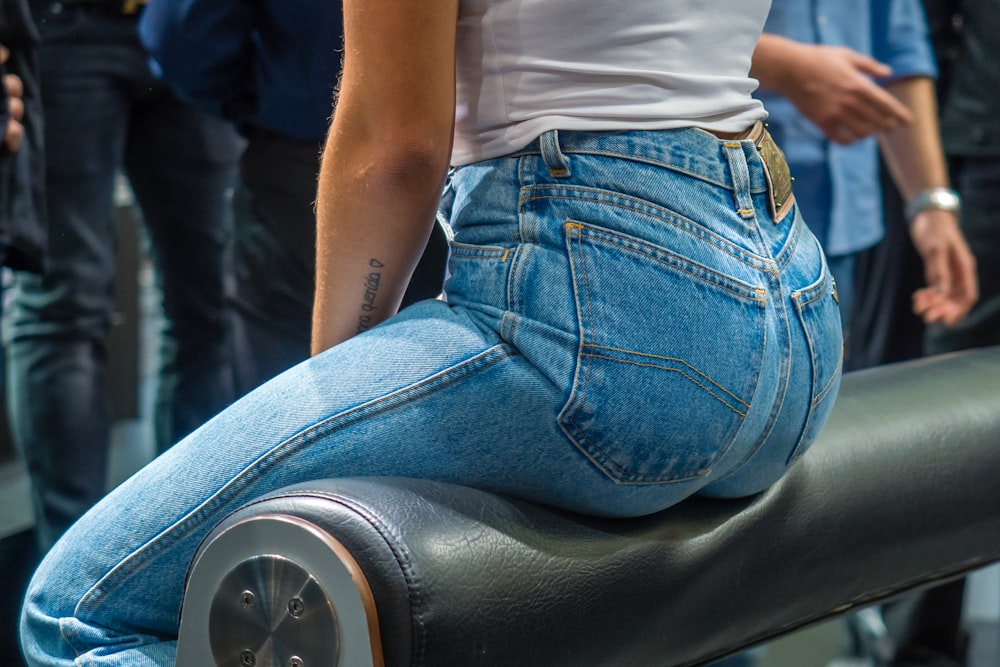目次
梨状筋症候群ってどうやって診断されるの?
臀部痛や大腿部痛を有する症例に対して梨状筋症候群を疑って臀部筋群の柔軟性向上を目的としてアプローチをすることって多いと思います.
ただ理学療法士・作業療法士の中にはただ臀部痛があるだけで梨状筋症候群を疑って梨状筋に対してアプローチをするといった短絡的なアセスメントしか行えていないかたもけっこういらっしゃいます.
ところでどのような理学所見に基づいて梨状筋症候群を疑うのが妥当なのでしょうか?
今回は梨状筋症候群が疑われる際に行っておきたいテストをご紹介させていただきます.

今回ご紹介する論文
Review Arch Phys Med Rehabil. 2002 Mar;83(3):295-301. doi: 10.1053/apmr.2002.30622.
Piriformis syndrome: diagnosis, treatment, and outcome–a 10-year study
Loren M Fishman 1, George W Dombi, Christopher Michaelsen, Stephen Ringel, Jacob Rozbruch, Bernard Rosner, Cheryl Weber
Affiliations expand
PMID: 11887107 DOI: 10.1053/apmr.2002.30622
今回ご紹介する論文は2002年に掲載された論文です.
研究の目的
Objectives: To validate an operational definition of piriformis syndrome based on prolongation of the H-reflex with hip flexion, adduction, and internal rotation (FAIR) and to assess efficacy of conservative therapy and surgery to relieve symptoms and reduce disability.
この研究では股関節屈曲・内転・内旋(FAIR)時のH反射の延長に基づく梨状筋症候群の運用上の定義を検証し,症状緩和と障害軽減のための保存療法と手術の有効性を評価することとしております.
研究デザイン
Design: Before-after trial of cohorts identified by operational definition.
研究で事案は操作上の定義で識別されたコホートによる前後比較試験となっております.
研究セッティング
Setting: Outpatient departments of 2 hospitals and 4 physicians’ offices. Surgery performed at 3 hospitals.
この研究では2つの病院の外来診療科と4つの医院で行われ,手術は3つの病院で行われました.
研究対象
Patients: Consecutive sample of 918 patients (1014 legs) with follow-up on 733.
対象は918例(1014脚)の連続標本で,733例について追跡調査を行っております.
介入方法
Intervention: Patients with significant (3 standard deviations [SDs]) FAIR tests received injection, physical therapy, and serially reported pain and disability assessments. Forty-three patients (6.47%) had surgery.
介入はFAIRテストが有意(3標準偏差[SD])であった症例注射,理学療法を行い,痛みと障害の評価を定期的に報告しております.
43例(6.47%)が手術を受けております.
主要アウトカム
Main outcome measures: Likert pain scale. Subjective estimates of disablement in activities of daily living and instrumental activities of daily living.
主要アウトカムはLikert疼痛スケール,日常生活動作および手段的日常生活動作の障害に関する主観的推定値としております.
研究の結果
Results: At 3 SDs, the FAIR test had sensitivity and specificity of.881 and.832, respectively. Seventy-nine percent (514/655) of FAIR test positive (FTP) patients improved 50% or more from injection and physical therapy at a mean follow-up of 10.2 months. Average improvement was 71.1%. Of 385 FTP patients with disability data, mean disability fell from 35.37% prestudy (SD =.2275) to 12.96% poststudy (SD =.1752), a 62.8% improvement. Twenty-eight surgical FTP patients (68.8%) showed 50% or greater improvement; mean improvement was 68% at a mean follow-up of 16 months. Surgery reduced the mean FAIR test to 1.35 +/- 2.17 months postoperatively. FTP patients generally improved 10% to 15% more than others after conservative treatment.
3SDにおいて,FAIRテストの感度と特異度はそれぞれ.881と.832でありました.
FAIRテスト陽性(FTP)例の79%(514/655)は,平均10.2ヵ月の追跡時に注射と理学療法により50%以上改善しております.
平均改善率は71.1%でありました.
障害データのあるFAIRテスト陽性(FTP)例385例のうち,平均障害率は介入前の35.37%(SD=0.2275)から試験後の12.96%(SD=0.1752)へと62.8%の改善がみられました.
28例の外科的FAIRテスト陽性(FTP)例(68.8%)が50%以上の改善を示し,平均16ヶ月のフォローアップで平均改善率は68%でありました.
手術によりFAIRテストの平均値は術後1.35±2.17ヵ月に減少しました.
FAIRテスト陽性(FTP)例は保存的治療後,一般的に他の患者より10%~15%多く改善しました.
研究の結論
Conclusions: The FAIR test correlates well with a working definition of piriformis syndrome and is a better predictor of successful physical therapy and surgery than the working definition. The FAIR test, coupled with injection and physical therapy and/or surgery, appears to be effective means to diagnose and treat piriformis syndrome.
FAIRテストは梨状筋症候群の作業定義とよく相関し,作業定義よりも理学療法と手術の成功の予測因子として優れていることが明らかとなりました.
FAIRテストは,注射と理学療法・手術の組み合わせにより,梨状筋症候群の診断と治療に効果的であると思われます.
今回は梨状筋症候群が疑われる際に行っておきたいテストをご紹介させていただきました.
側臥位姿勢での股関節屈曲・内転・内旋肢位で疼痛が出現するかどうかが梨状筋症候群を疑われる場合にはポイントになりそうですね.
またこの肢位は梨状筋に対してアプローチするうえでも重要な肢位になりそうですね.






